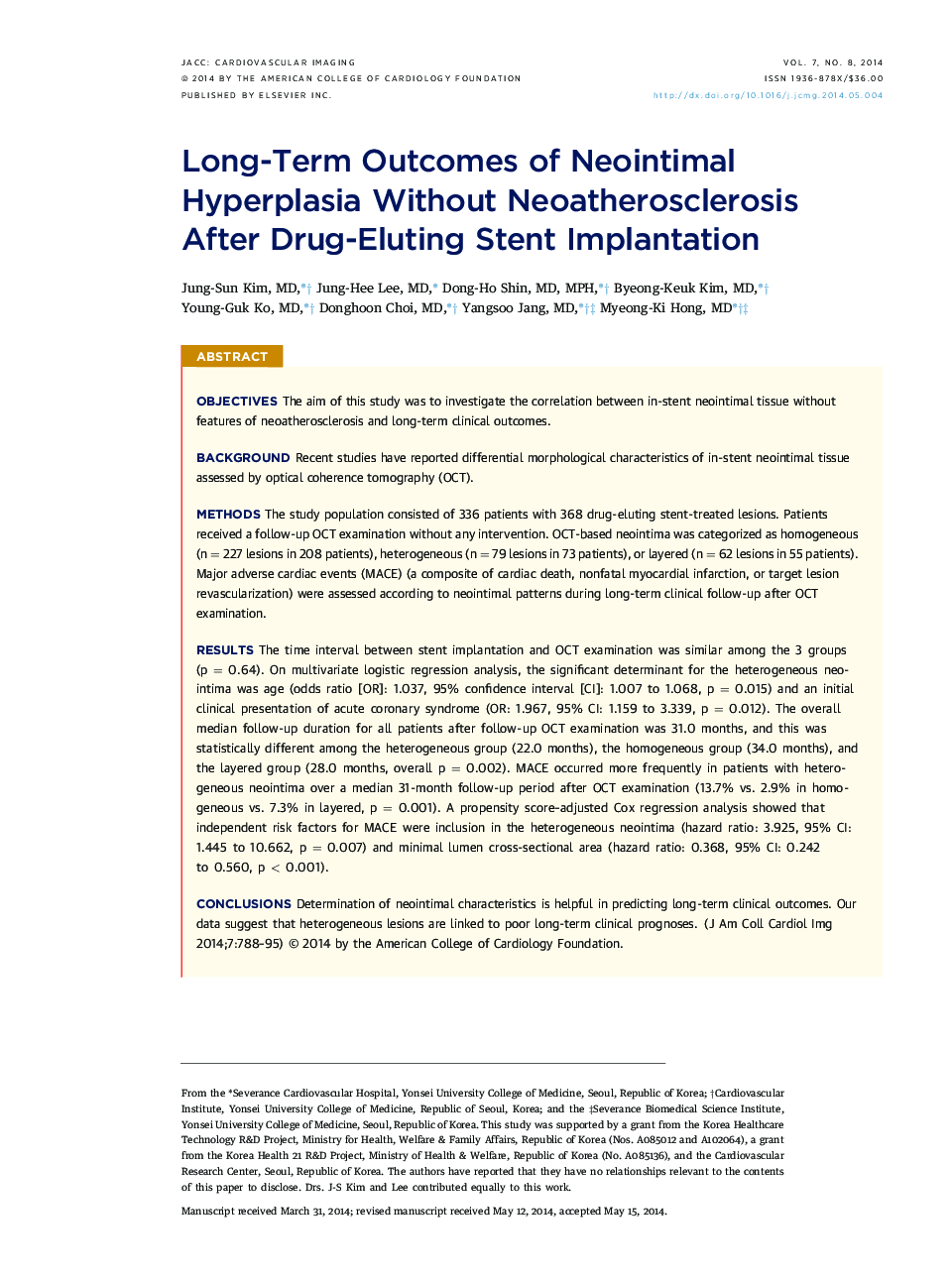| Article ID | Journal | Published Year | Pages | File Type |
|---|---|---|---|---|
| 5980007 | JACC: Cardiovascular Imaging | 2014 | 8 Pages |
ObjectivesThe aim of this study was to investigate the correlation between in-stent neointimal tissue without features of neoatherosclerosis and long-term clinical outcomes.BackgroundRecent studies have reported differential morphological characteristics of in-stent neointimal tissue assessed by optical coherence tomography (OCT).MethodsThe study population consisted of 336 patients with 368 drug-eluting stent-treated lesions. Patients received a follow-up OCT examination without any intervention. OCT-based neointima was categorized as homogeneous (n = 227 lesions in 208 patients), heterogeneous (n = 79 lesions in 73 patients), or layered (n = 62 lesions in 55 patients). Major adverse cardiac events (MACE) (a composite of cardiac death, nonfatal myocardial infarction, or target lesion revascularization) were assessed according to neointimal patterns during long-term clinical follow-up after OCT examination.ResultsThe time interval between stent implantation and OCT examination was similar among the 3 groups (p = 0.64). On multivariate logistic regression analysis, the significant determinant for the heterogeneous neointima was age (odds ratio [OR]: 1.037, 95% confidence interval [CI]: 1.007 to 1.068, p = 0.015) and an initial clinical presentation of acute coronary syndrome (OR: 1.967, 95% CI: 1.159 to 3.339, p = 0.012). The overall median follow-up duration for all patients after follow-up OCT examination was 31.0 months, and this was statistically different among the heterogeneous group (22.0 months), the homogeneous group (34.0 months), and the layered group (28.0 months, overall p = 0.002). MACE occurred more frequently in patients with heterogeneous neointima over a median 31-month follow-up period after OCT examination (13.7% vs. 2.9% in homogeneous vs. 7.3% in layered, p = 0.001). A propensity score-adjusted Cox regression analysis showed that independent risk factors for MACE were inclusion in the heterogeneous neointima (hazard ratio: 3.925, 95% CI: 1.445 to 10.662, p = 0.007) and minimal lumen cross-sectional area (hazard ratio: 0.368, 95% CI: 0.242 to 0.560, p < 0.001).ConclusionsDetermination of neointimal characteristics is helpful in predicting long-term clinical outcomes. Our data suggest that heterogeneous lesions are linked to poor long-term clinical prognoses.
